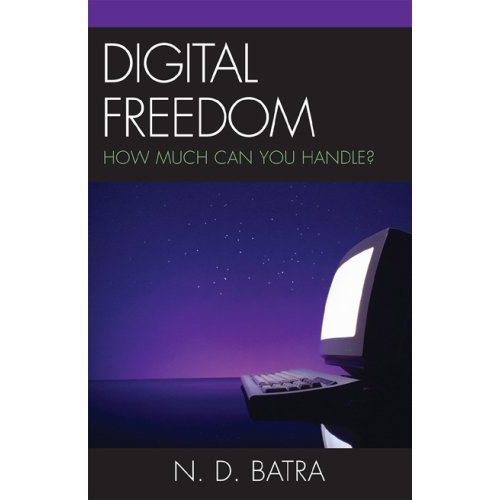The Feeling’s Mutual
Sharing values, India and US have much to offer each other
N D Batra
From The Times of India
24 November 2009
Today, when Prime Minister Manmohan Singh visits the White House, he will face the diplomatic challenge of his lifetime.
Seeking reaffirmation of the warm relations that began with Bill Clinton and saw an upsurge during the times of George W Bush will be a Himalayan task to accomplish. Especially after President Barack Obama’s China visit during which he acquiesced to Beijing’s hegemonic ambitions in Asia.
But what better way to warm up the dinner conversation than to avow the shared values about which Obama reminded his stone-deaf Chinese audience: “These core principles, freedoms of expression and worship, of access to information and political participation, we believe are universal rights.” And who could better embody these universal values than a Sikh gentleman politician from India!
It is important not to forget that the United States is more than the White House; that political power is decentralised and distributed; that Congress matters; that Republicans are not dead; and that there will be time to rectify the misguided statement in the Obama-Hu Jintao joint communique that China has a role to play in South Asia. The declaration sounds ridiculous considering that China is afraid of meeting with a humble Buddhist monk.
Let’s think about the positives. US perception of India is changing for the better, thanks to the mature and savvy ways India has been managing its internal and external affairs. For example: the aftermath of the Mumbai terrorist attack; keeping up economic growth despite the global financial crisis; the India-China verbal pyrotechnics arising out of China’s flagrant territorial claims and the Dalai Lama visit to Arunachal Pradesh; and the contribution to Afghanistan’s reconstruction in spite of chaotic conditions. India is viewed as stable and open, and an attractive place to do business.
US goodwill towards India is undiminished, in spite of the Obama administration’s effort to up-end its relations with China. Few Americans want China to play any role in Afghanistan and Pakistan, contrary to what Obama told his bankers in Beijing. In contrast, most Americans do believe that the US has an abiding interest in India’s gradual but steady rise as an economic and diplomatic power. Asia is too important to be left to a single country to exercise hegemony, as the recent Association of South East Asian Nations (ASEAN) summit in Thailand also acknowledged.
The forecast that India would become a responsible economic power was not ignored at the summit. Braving the recession with the prospect of 6.5-7 per cent growth in the current fiscal year has rekindled hopes that 8 to 10 per cent economic growth in the future is achievable
Looking at the phenomenal economic rise of China and, consequently, Japan’s efforts at repositioning itself in light of new realities, it is all the more important for the US to establish a long-term cooperative relationship with India. It also must be understood that for most Indians America’s attractiveness is genuine and is based upon its dynamic culture and values. American culture is perceived as a culture of open minds and open roads that lead to the free marketplace of goods and ideas. It is a culture of optimism that holds the prospect of expanding human possibilities. Americans fervently believe that global poverty can be eliminated and sickness can be cured.
The Clinton Global Initiative and the Bill and Melinda Gates Foundation, for example, are built on the faith that the human condition can and must be improved. India shares these universal values.
Americans fondly hope that, as China keeps growing, it would open itself to other cultural influences including free expression and democracy and, therefore, US-China interdependence is good for keeping the peace. Scholars like Joseph Nye of Harvard argue that a country can become attractive by engaging other people rather than isolating them. So if trade with China and rising prosperity have rechannelled the Chinese people’s energies and given them new hopes and global dreams, a similar policy might work for other countries too.
What is needed most is investment in regional and global networks for economic interdependence, rather than assertion of military power. In this respect, American civil society and its universities are far more persuasive in presenting the US to other people than anything the government can do. Brand America too makes the US attractive. When an American apparel maker opens a factory in Sri Lanka, Bangladesh or Indonesia, it spreads feelings of goodness among the people.
Extremists cannot stop Indonesians or Bangladeshis, for example, from improving their economic condition by making themselves smart for foreign direct investment. Therefore, bonding American national interests with other nations’ strategic interests is the key to the management of regional conflicts for which India can offer the US a great partnership. The impact of joint exercise of India-US smart power will be felt across central Asia, ASEAN and beyond the Indian Ocean – a topic of great interest for Prime Minister Singh and President Obama to explore when they break bread in the White House.
The writer is professor, communications and diplomacy, Norwich University, US.
Publication: Times of India Mumbai
Date: Nov 24, 2009;
Section: Editorial;
Page: 16
Monday, November 23, 2009
US and India
at Monday, November 23, 2009 Posted by Narain D. Batra
Subscribe to:
Post Comments (Atom)

No comments:
Post a Comment